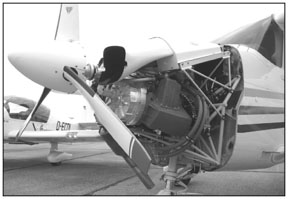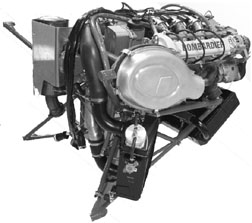
Its no mystery why Continental and Lycoming dominate the light aircraft engine market. Theyve been at the engine business forever, certification rules pose a strong economic barrier for new entrants and, in the end, the industry is more conservative than its willing to admit. Even powerplant initiatives from within the two dominant companies have rarely met with ringing success.
Although some companies keep trying, the odds are still long that a new aircraft engine will succeed in the North American market, although it might do we’ll enough in the world market. Thats why even U.S. airframe manufacturers cant ignore new engine ideas, even if they arent enthusiastic about U.S. introductions. Heres a list of reasons why thats so.
Reason 1: STCs Rarely Work
At current U.S. fuel prices, aftermarket STC conversions will not return the investment required for a clean-sheet engine type, although they work for existing engines in older airframes. Unique enginering costs are too high and the volume is too low. Conversions are unlikely to pay off even a portion of the developmental costs of a new powerplant. Which leads to…
Reason 2: Lack of Volume
The low volume of STCs doesnt support the economy of scale necessary to fund further development and lower the price of the engines and related services in order to expand the market. Buyers have more confidence in high-volume products than in limited-volume products. High volume comes from OEMs, which leads to…
Reason 3: Conservatism
If OEM participation in a new engine initiative wasnt always a must, it is now. Thats one reason why Thielert Aircraft Engines has made such impressive progress. Diamond Aircraft signed on and committed to the project early and has followed through.

Other OEMs have explored diesels and even the new V6 design from Aircraft Engine Services (ne Bombardier), but OEM commitments to these engines are few and far between. Certifying a new engine in an airframe is expensive and risky and the payoff is often in doubt, leading to…
Reason 4: They don’t Do Much
This is a variation on we-suck-less marketing. In truth, engines from Lycoming and Continental are reasonably reliable and efficient. They have acceptable power density and with years of sunk costs, theyre bound to be cheaper to buy and market than new, clean-sheet engine designs. Current diesel offerings don’t have quite the power density and give up performance due to their high airflow requirements. True, the diesels are more economical but in North America, that doesnt matter because…
Reason 5: Fuel is Cheap
In North America, avgas is still widely available and even at $4 to $5 a gallon, there’s little evidence so far that owners are changing their flying habits in response to fuel costs.
For owners who don’t care much about fuel economy, a fuel-sipping diesel is a hard sell against a conventional gas engine that has a proven track record, is easier to service and probably makes the airplane go faster. The new AES V-6 promises more speed, but if the sun is setting on gasoline engines, the timing may be wrong.
Reason 6: Service Worries
Owners seem to worry more about fixing an engine than paying for fuel to fly it. Thats one reason Diamond has delayed introduction of its diesels in the U.S., pending a service network. But diesel or gas, any new engine faces the same customer pushback on long-term reliability. Lycs and Continentals have their warts, but theyre a known quantity when they have to be repaired or overhauled.
Developers of new engines can say the same thing, but despite their famous lapses in quality and maddening customer service, Lycoming and Continental have proved it over the past 50 years. For new engine developers, the fight is uphill all the way.





